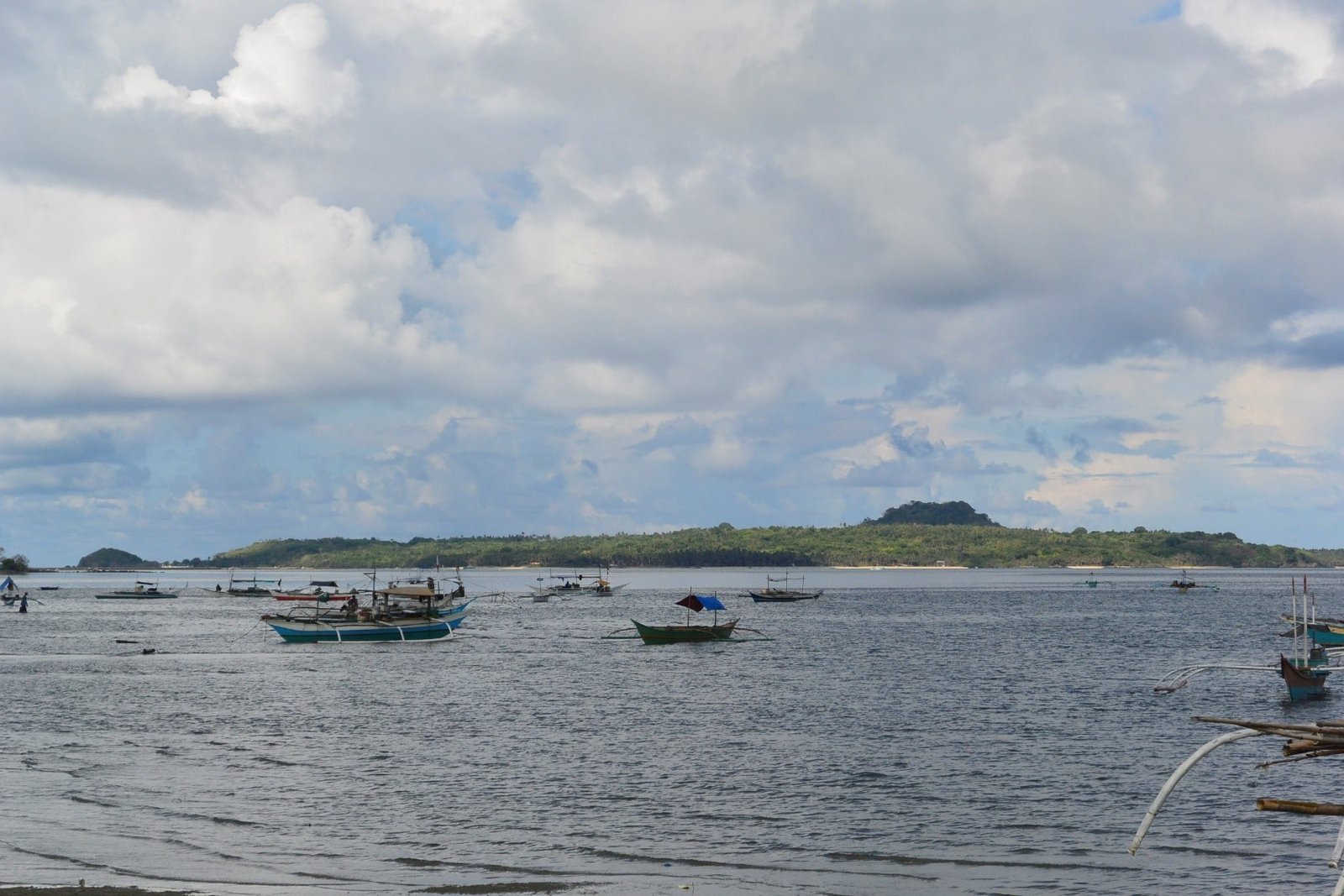Beneath Palawan’s facade of grandeur beauty are secrets that lie deep in the abyss of its blue waters; secrets that are buried underneath the fine sands of its pristine beaches; secrets that hide among the sturdy trees in its lush forests; secrets that seemed to be lost in the memories of the wild.
Today, amidst the continuous innovation in modern technology, knowledge of the world, unknown to human, unveils.

EXPLOSIVE BEGINNINGS
Fifteen hours of sea voyage from Puerto Princesa City, the municipality of Cuyo, Agutaya and Magsaysay are destinations worth travelling to. Aside from their magnificent beaches is the colorful history that hued the municipality dating far back during the Spanish era and the rich culture that lives in the heart of its people.
Dotting the archipelago are 16 inactive volcanoes that gave birth to the landscape of the island group. According to the list of inactive volcanoes of the Philippine Institute of Volcanology and Seismology, these inactive volcanoes are Aguada, Agutaya, Bisucay, Boctong, Bonbon, Canipo, Caponayan, Cocoro, Dit, Lubid, Maracanao, Matarawit, Patunga, Paya, Tacbubuc, and Tagauayan with heights ranging from 23 meters (Paya) to 271 meters (Boctong).
“One thing na nalecture sa amin ng mga scientists, mga Australian scientists, na ang Cuyo is volcanic in origin. So na build siya because of volcanic eruptions,” said Roberto Esplida, officer in charge of PHIVOLCS Palawan Office in an exclusive interview of Palawan Daily News.
Inactive volcanoes or dormant volcanoes are volcanoes that haven’t had any activities for a long time, but are probable to erupt or have activities again. Historically in the Philippines, Mount Pinatubo in Zambales shocked the world with its devastating explosion on June 15, 1991 after its inactivity for 500 years.
“There’s a possibility. But then, it takes hundred to thousands of years para magka-activity ulit,” Esplida added.
The presence of volcanic rocks in Cuyo island group was confirmed by the research of Cris Reven Gibaga and Dr. Carlo Arcilla of the National Institute of Geological Sciences entitled “Young Volcanism in Cuyo Islands, Palawan, Philippines: Example of an Intra-Plate Magmatism in the Palawan Continental Block”.
According to the study, the last activity and the chance of another eruption of the volcanoes in Cuyo Archipelago is still unknown in the void of the unknown due to the unavailability of the data.
“Our data on the geology and geochemistry of Cuyo volcanoes are not enough to determine the chances of these volcanoes to erupt again. Detailed geochemical study and radiometric age dating of the volcanic rocks of Cuyo are necessary to determine the probability of these volcanoes to erupt again,” said Cris Reven Gibaga, one of the authors of the study, in an email.
UNIQUE AMONG THE FILIPINO VOLCANOES
“The volcanism in Cuyo is unique from the rest of volcanoes in the Philippines,” the researcher said.
According to the findings of their study, volcanoes in Cuyo Archipelago are unique from other Philippine volcanoes. Volcanic rocks from Cuyo island group are more similar to volcanic rocks found in Hawaii. These volcanic rocks have hump-shape pattern in the mid-ocean ridge basalt or MORB – normalized spidergram, a typical pattern of Ocean Island Basalts (OIB). OIB are product of hotspot volcanism. Volcanic rocks from other Philippine volcanoes have negative Niobium (Nb) anomaly in the MORB-normalized spidergram, a pattern associated with subduction process. Additionally, Cuyo is located on the Palawan Continental Block (PCB), a microcontinent far from the areas where subduction occurs like Hawaii situated on the middle of Pacific Plate. Hawaii islands have volcanic activities because of the hotspot volcanism.
Since Cuyo volcanoes are different from other Filipino counterparts, they have a different origin. These made them unique from their volcanic cousins from other areas in the Philippines. They are probably formed in a similar way to the volcanoes from the distant islands of Hawaii. Despite the findings, further geochemical analyses are needed to confirm this assumption.
“The origin of volcanism in Cuyo Archipelago is still unknown, but it is certainly not subduction-related. It is very difficult say right now that it is formed from hotspot volcanism like Hawaii since detailed geochemical data from isotope analysis and radiometric dating of volcanic rocks from Cuyo are still needed to further confirm this hypothesis. But as of now, preliminary geochemical data show that volcanic rocks from Cuyo is geochemically similar to the volcanic rocks of Hawaii,” Mr. Gibaga said.
According to Mr. Gibaga, other volcanoes in the Philippines are formed due to a process called subduction. Subduction is the movement of one plate beneath another to the hot lower part of the planet called the mantle in which these areas called subduction zones usually have volcanic activities.
“All of the volcanoes in the Philippines are formed from the subduction of oceanic crust underneath Philippine Mobile Belt (PMB). For example, Mt. Pinatubo is formed from the subduction of South China Sea oceanic crust beneath the PMB and Mayon Volcano is from the subduction of Philippine Sea beneath the PMB,” he explained.
CUYO, THE HAWAII OF THE PHILIPPINES
“We can say that Cuyo is the ‘Hawaii of the Philippines’ since the volcanic rocks are most likely the same,” said Gibaga.
“Both Cuyo and Hawaii are archipelago consist of volcanic islands that have beautiful beaches. The Waikiki Beach of Hawaii is comparable to Capusan Beach of Cuyo. Volcanic rocks that similar geochemically speaking in both areas, and probably formed in the same volcanic process,” the researcher added.
These volcanoes are not to be feared of. These volcanoes are gifts bestowed by the earth, shaping the islands in the area, creating a marvelous art with beautiful beaches and scenery. Without these volcanoes, the island group is inexistent, the pristine beaches, the colorful history, the rich culture and the wonderful Cuyonon people.
The volcanic secret of Cuyo Archipelago is slowly unveiled. Learning it, people not only from Cuyo or Palawan or Philippines, but all over the world will again be amazed with the beauty cast by an explosive disaster.